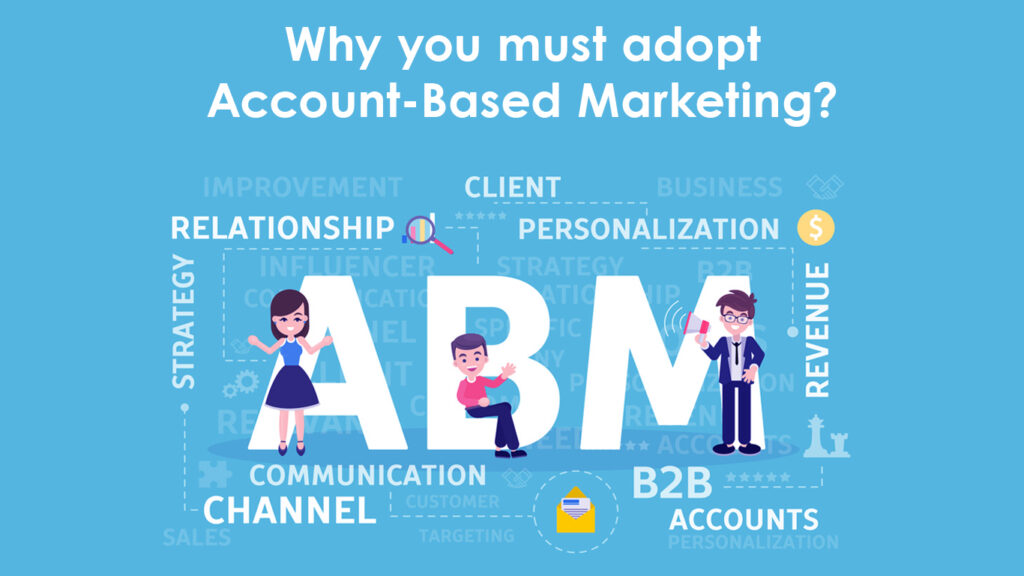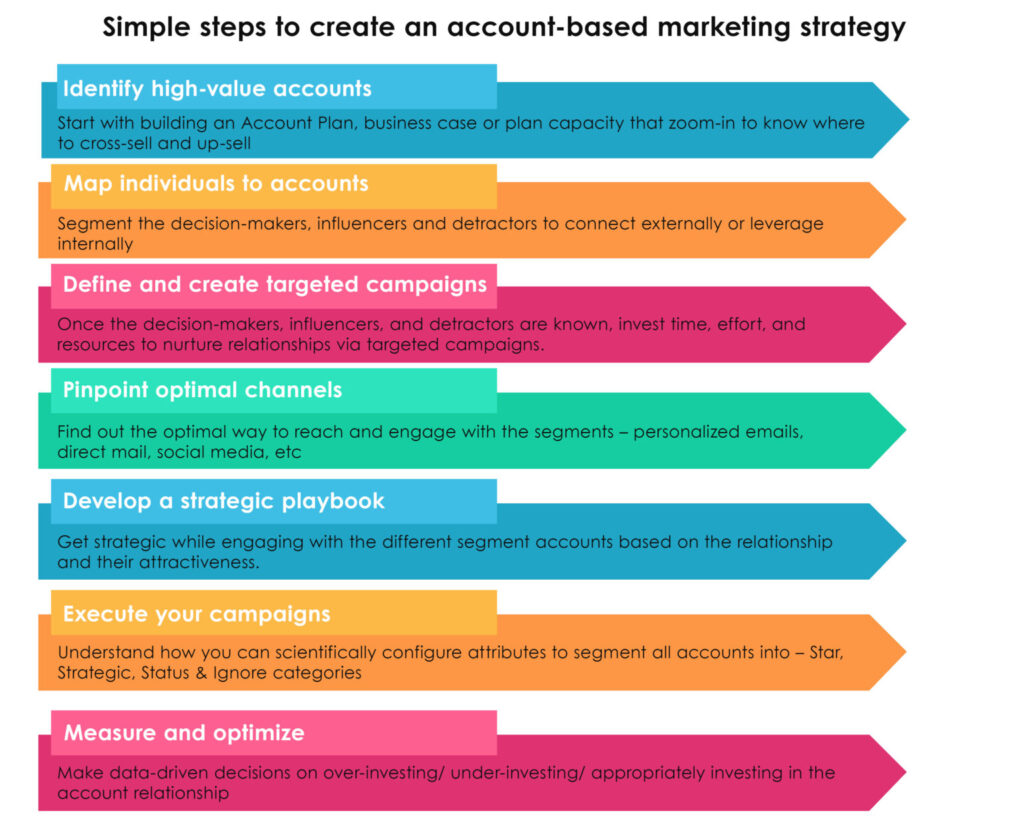Strategies for Establishing Meaningful Connections in Account-based Marketing

Marketing as a business philosophy has evolved its course by building business empires while taking advantage of innovation in design and technology. Ancient civilizations back in Pompeii, Egypt, and Arabian cultures had advertisers because humans always felt the need to promote their goods and services to people who needed them. But in the last 15 years, there has been a huge shift in the way businesses operate, thanks to the advent of the age of data.
Furthermore, the post-Covid-19 era after 2020 brought tough times that have shrunk the economy. Facing the revenue crunch, businesses have become overly conscious in their client targeting and marketing efforts.
Terminus conducted a study that showed, in 2019, 23% of respondents had no active ABM program. This year, in 2021, that number has dropped to just 5.8%. An overwhelming majority, 94.2% of respondents, currently say they have an ABM program.
Companies are getting creative and are employing unique ways to approach their clients to stand out from the rest.
Let start with an effective ABM implementation example, the courageous leap that GumGum took to sell its computer vision technology to T-Mobile. Through social media, the team got to know that the CEO of the Mobile T is a huge Batman fan. They leveraged this personal information and weaved an ABM strategy that was total spot-on!
The goal was to sell the collaboration in the most heroic way possible by employing writers, illustrators, and editors to put down a comic through innovative storytelling.
They sent 100 copies to T-Mobile and its agencies. Shortly after it was put out, a response came from CEOs who praised their idea and effort in the campaign.
That’s one stellar strategy of how to gather insights from various sources, personalize the message and pull off a spot-on strategy!
This brief introduction might have answered, ‘Why you must adopt Account-Based Marketing?
Before we proceed, here’s a fact check to further spur your interest!
According to a study by Altera Group, 97 percent of marketers reported that ABM had a somewhat higher or much higher ROI than other marketing campaigns. In another study, 87 percent said it outperforms every other marketing investment.
Now, let us explore the magic ingredients of ABM that businesses are sprinkling on their marketing strategy?

What is Account-Based Marketing?
Account-based marketing is a whole new level of digitalization in which account based marketing firms work to personalize marketing efforts when targeting prospects. In essence, it is a strategy that directs all the marketing efforts on one key account at a time. It is also referred to as a modern approach against the traditional one-to-many approach; ABM applies a one-to-one strategy to target high-value prospects.
It is an integrated business strategy wherein sales, marketing, and customer success teams come on a single platform to target, engage, and expand clientele with the maximum revenue growth potential. The personalization at the account level requires sales and marketing efforts to be in perfect sync to pass on account-specific messaging.
What is the motivation behind Account-Based Marketing in one line?
‘It gives higher revenues in a shorter sales cycle.’
In ABM, marketers don’t go about casting a wider net in their lead-generation efforts. Instead, they work closely with sales to lay down ideal prospects and employ tailored efforts with the right messaging to the target accounts.
Here’s another example, How GumGum won over a REALLY BIG client, McDonalds by sending them a Big Mac.
Big companies would take an extra and special effort for you to be seen. A personalized mail wouldn’t do the trick.
GumGum sent curated kits containing a Big Mac that had “ingredients” which presented their service, i.e., computer vision technology and why it is special.
GumGum used the very language with the same metaphors and symbols that McDonalds used to spike interest and showcased the benefit of their product.

Why Would I Want to Practice ABM?
It boils down to the impact of sales and marketing to these large, important accounts is SIGNIFICANT.
According to TOPO and ABM Leadership Alliance, companies raised their average contract value by 171 percent ($195,294 vs. $71,941) after switching to account-based marketing firms strategy. In another separate study, 91 percent of marketers said their ABM accounts have a comparatively bigger deal size, a quarter of respondents reporting deal sizes was at least 50 percent larger.
Especially for an enterprise, B2B company looking to grow beyond bounds, account-based marketing can be a game-changer. It enables them to knock before actual gatekeepers and decision-makers; it also empowers them to engage in a dialogue to address pain points they’re experiencing. It approaches new customers with precision, nurtures prospects with critical communications, and at the same time, it all can be automated — to boost the efficiency and efficacy of marketing and sales efforts of a B2B company.
Who Does ABM Benefit, and How?
YET! As fruitful as ABM has been for some organizations, it will not bear the same success for every company. Typically, this strategy is best suited in enterprise-level sales organizations with an employee size of 1000 or more.
You ask, Why?
Because this strategic approach is time-consuming and demands huge dedicated resources to implement such personalized campaigns.
How to Align Sales & Marketing Around ABM Strategy?
Sales sees the marketing team as a trusted ally when working on strategic ABM mission. The marketing team goes ahead from just delivering leads to work in tandem with the sales team on a predefined list of prospects that both teams think of as highly promising prospects. According to Linkedin research, 84 percent of businesses have agreed that ABM delivers higher ROI than other campaigns. (Read, How does B2B sales look like in 2030? )
The marketing team gains a deeper understanding of the target audience; this helps them create insightful content that resonates in the messages and content, pushing their effort in other areas.
Customers benefit the most from ABM as they’re delivered a better experience. With innovation in digital interactions, customers prefer personalized interactions with targeted messages and curated content. The right customers who are in genuine need of your product appreciate the work you put in; at the same time, efforts are not wasted on the customers off the mark.
Why Do I Need Multiple ABM Journeys?

Since the ABM requires huge investment in both time and resources, therefore, it should follow a different strategy for:
Top -tier account that have stopped engaging with your marketing campaigns
Most ideal customer profile
Accounts with the greatest revenue growth potential
Not all prospects should be treated the same – audience segmentation is vital. And each audience segmentation requires an exclusive ABM journey. Lisa Shepherd from Mezzanine Growth, during a Stop the Sales Drop Reboot Friday panel, mentioned that the journey is often like a pinball machine with twists and turns, stoppers, and gutters.
At the same time, get creative about the interaction with prospects and customers like GumGum in the above-referred examples. It’s time we get more personal with the accounts that we want to win, protect, and expand so we can grow hundreds of percent each year.
Conclusion
According to a study by LinkedIn, not only more than half of the B2B marketers are already using ABM campaigns in their current business operations. But also, more than 80 percent plan to boost their budget for it over the next year.
So now you understand, why all the fuss about ABM?
How Can We Help You?
Worxwide Consulting is a leading growth consulting firm that helps you with account based marketing services. We have a dedicated team of digital innovators, growth consultants and UI UX designers to help you build long-term relationships beyond revenues with your clientele.
tx, USA

London, UK

India


